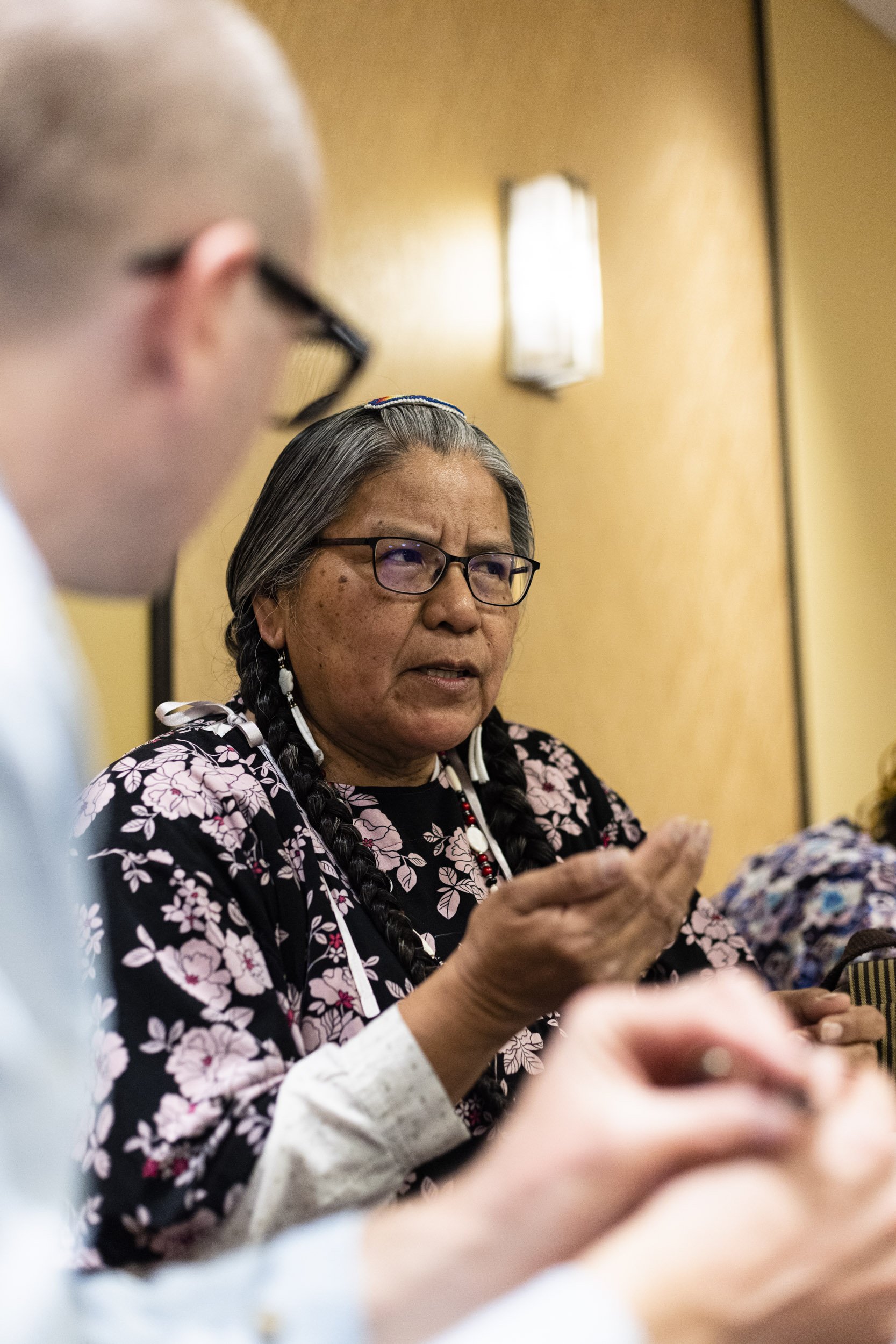Samantha Redheart is the STEM coordinator for the Yakama Nation’s Environmental Restoration Waste Management Program, photographed here on the banks of the Yakama River. In a recent article published in the Columbia Riverkeeper’s newsletter Currents she wrote: “My goal is to get tribal youth interested in environmental STEM fields related to ongoing cleanup activities at the Hanford Nuclear Reservation. This is based on the shortage of qualified engineers, scientists, thenologists, mangers, and analysts needed to clean up the environment damaged by nuclear and hazardous waste materials. I also provide Yakama Nation members and community with necessary skills to make informed decisions and and take responsible action. Hanford’s future will depend on the next generation’s advocacy for cleanup that is thorough and just.”
A couple of weeks ago I had the opportunity to join Columbia Riverkeepers and the Yakama Nation for a tour of the nuclear facility along the Hanford Reach of the Columbia River. We were joined by Council members and students from the Yakama Nation Tribal School and Heritage College.
The nuclear reserve is where the United States built the nuclear bombs which were dropped on Japan in World War 2. The site has a variety of radioactivity pollution problems some of which threaten to contaminate the river. This stretch of the river is home to the last spawning grounds for Chinook Salmon in the entire river system, the rest of such habitat having been destroyed or cut off to fish by dams. The Yakama Nation has been working hard to have a greater say in cleanup and management activities at the location and to maintain their cultural connections to this area despite the restrictions to access created by the Department of Energy. These restrictions violate the Nations' rights to hunt, fish, and gather in their traditional territory.
Here are a few photos from the journey.
Yakama Nation Tribal Council Member Arnold Eyle speaking at a dinner gathering to discuss the Hanford Reach prior to the journey to the Reach which occurred the following day.
Trina Sherwood, Cultural Specialist for the Yakama Nation Natural Resources department, was one of the leaders who provided interpretation for students from the Tribal School on Hanford tour.
Reviewing the tour route through Hanford.
Photographing one of the mothballed reactors at Hanford.
Tribal Council Member Christopher Wallahee, Assistant Secretary of the Yakama Tribal Council, photographed at the Hanford Reach during the tour.
Yakama Nation Tribal Council Member Christopher Wallahee shaking hands with students at the end of the Hanford Journey.
Security at one of the entrances to Hanford.
Nuclear facilities close to the Columbia River. This area was chosen as a nuclear reactor site because the cold water from the river could be used to cool the reactors. Now radiation from the facilities threatens the Big River’s watershed.










